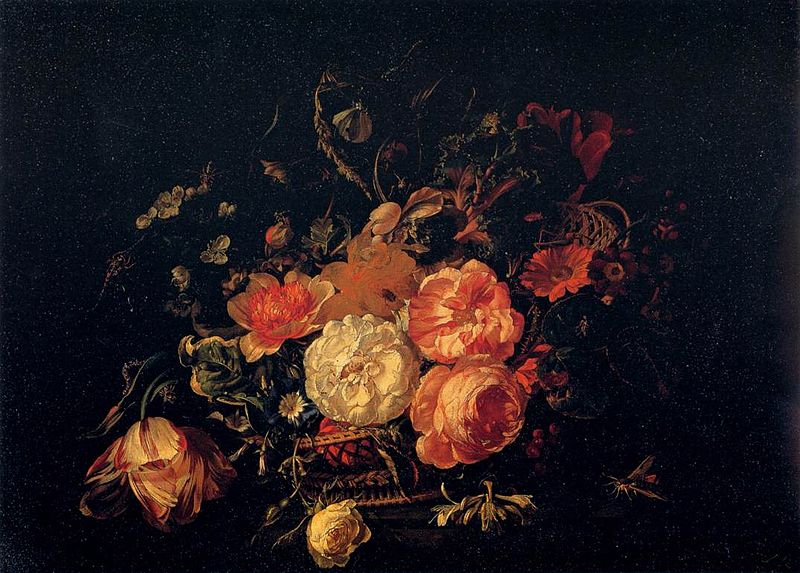Rachel Ruysch (The Hague, June 3, 1664 - Amsterdam, August 12, 1750) was a Dutch painter who specialized in floral still life. She created her own style and achieved international fame, compared to Jan van Huysum in popularity.
With a career spanning over 60 decades, she became one of the best documented painters of the Golden Age of the Netherlands, considered one of the most talented painters of her time.
Personal life and career of Rachel Ruysch
Rachel was born in 1664 in The Hague, the daughter of scientist Frederik Ruysch and Maria Post, daughter of architect Pieter Post. Her father was a professor of anatomy and botany, and had a large collection of animal skeletons, mineral and botanical specimens, which Rachel used to practice drawing.
At an early age, she began to paint flowers and insects from her father's collection, following the style of the painter Otto Marseus van Schrieck. Her father's samples contributed to Rachel's technique, and she painted nature with great dexterity and precision.
In 1679, at the age of 15, she was taken on as an apprentice by Willem van Aelst, a prominent flower painter from Amsterdam. Rachel studied with him until her tutor's death in 1683. In addition to painting techniques, he taught her how to arrange the bouquets in vases to look like a spontaneous, less formal arrangement, which gave a more realistic effect.
By the age of 18, she was producing and painting, signing and selling her works on her own. She had contacts with other painters of the time such as Maria Moninckx, Jan Moninckx, Alida Withoos, and Johanna Helena Herolt-Graff.
In 1693 she married the painter Juriaen Pool, with whom she had ten children, but she kept painting and producing internationally renowned works with the support of patrons.
In 1701 she was received into the painters' guild and was later invited to be court painter to the palatine elector Johann Wilhelm, for whom she worked until 1716, the year of the prince's death. She painted until her eighties, leaving a hundred known works.
Rachel died at the age of 86, on August 12, 1750, in Amsterdam. Some eleven poets wrote poems in her honor.
Rachel Ruysch's Style
Rachel had a great understanding of drawing and techniques of ancient traditions. This knowledge honed her painting skills. She devoted extreme attention to every detail of her work. Each petal was created meticulously, with delicate brushwork.
The backgrounds of her paintings are usually dark, following the fashion of flower paintings of the second half of the 17th century. His asymmetrical compositions with tumbled flowers and wild stems created paintings with a gritty energy.
Ruysch depicted forest solos starring small animals, reptiles, butterflies, and fungi several times early in his career. Later, she adopted flower painting as her major preoccupation and continued painting until her death, continuing the 17th century style until the middle of the next century.
The artist's skill lies in looking at each flower in a totally realistic way, which is composed later in an elaborate arrangement that would be very difficult to achieve in nature, as the flowers do not support each other so well in this type of arrangement.
As with most of the flower works of the late 17th century, the colors of the flowers are much more balanced than those present in the earlier paintings.
Aside from Jan van Huysum, no 18th century flower painter was comparable to Rachel Ruysch.




